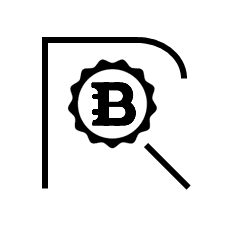RVS offers two software packages – the RVS Closing Price System and the RVS Day Trading System – which claim to allow users to make money through share trading.
Forum posts suggest that RVS are asking for £4,925 for the Closing Price System, with a further £4,925 if the user successively generates £30,000 in profit within the first two years.
Who are RVS?
No details of who is behind the business is provided on RVS’ website, price-systems.com. No business registration or contact details are provided.
There is an RVS Group on the FCA register but it is totally unrelated to price-systems.com and the trading software provider; it sells photocopiers.
The current owners appear to have taken possession of the price-systems.com domain in 2017. The details of who owns price-systems.com are anonymous.
The website has a copyright notice of “RVS 2005-2018”. Given that neither RVS nor its website existed prior to 2017, the copyright date of 2005 appears to be spurious.
A press release for RVS on pr.com (dated March 2018) lists the contact for RVS as George Kingston, along with a mobile number. I could find nothing else to connect “George Kingston” with RVS, and it is quite possible that there is no such person.
If an investment firm is unwilling to disclose who is behind the business, exercise extreme caution before handing over any money.
How safe is the investment?
Short-term share trading is essentially gambling and users should expect up to 100% losses, especially if they are going to buy software from a company that refuses to disclose its details.
Any “guarantees” provided by RVS as to returns are only as good as the company backing them, and as RVS refuses to disclose who the company are, the guarantees are worthless.
RVS reps claim that a “fail-safe” prevents users from losing more than 5%. What they are probably referring to is a “stop-loss” that automatically sells the share if it falls below a certain value.
However, all a 5% stop-loss achieves is to leave you with 95% of your original capital which now has to be reinvested. If you reinvest in a different share with a 5% stop-loss and the stop-loss is activated, you now have 90.75% of your money left, which again has to be reinvested. This can continue indefinitely until you have lost all your money.
Virtually all individual shares will fall by 5% from time to time. This means that a 5% stop-loss makes it extremely likely that, after going up and down for a bit, the end result will be 95% of your original investment sitting in cash. This makes it extremely likely that you will lose 5% of your money in successive trades until you either give up or lose all your money.
Should I invest with RVS?
Short-term share trading is a zero sum game: for every trader that makes a profit, another must make a loss. On average the losses cancel out the profits, and the long-term expected return of share trading is nil, minus costs.
In this case, users are being asked to hand over £4,925, which means the long-term expected return is that users will lose £4,925, plus any other money they spend in order to deal in shares.
No evidence whatsoever is provided by RVS that users can expect to beat the usual odds of short-term share trading.
According to forum posts, RVS reps are claiming that the company can turn £4,925 into at least £25,075 in 2 years. (The specific claim is that investors will make £30,000 in 2 years; from this we deduct the second payment of £4,925 that investors would then be due to pay RVS for the software.) This represents a return of 225% per year even on the most conservative basis. If £30,000 is meant to be pure profit, the return is even higher.
If RVS had in fact developed software that could guarantee consistent market-beating returns, let alone returns of 225% per year, they could licence it to institutional investors and make billions of pounds a year.
So why are they selling it for a piddling £4,925 a pop?
Do not proceed unless you are prepared to lose all your money.
What are the alternatives?
Turning £4,925 into £30,000 is in fact very easy. All you have to do is continue investing £4,925 each year, and assuming a modest growth rate of 5% per year after charges you’d have £30,000 in a little over five years. (Although in reality it is impossible to make assumptions about stockmarket returns over a mere five years.)
Of course, the drawback is that you actually have to invest a meaningful amount of money in pursuit of your goal of getting £30,000.
The advantage is that you won’t almost certainly lose your £4,925 to RVS’ anonymous owners and have to start all over again.

